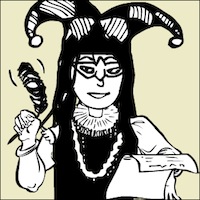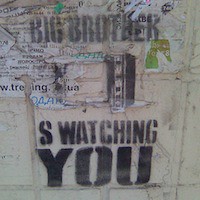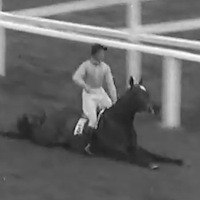Vandals Rip Up NY Giants Field

The Polo Grounds were crumbling. The New York Giants had played on its turf for more than sixty years, although it wasn’t where they’d first started. Three years before to the day, Willie Mays had made baseball history with an over-the-shoulder catch of a Cleveland fly ball, and the team had swept the World Series. Now, on September 29, 1957, at their last game in New York, a banner at right field implored, “Stay, team, stay.” The Giants were moving to San Francisco.
Barely one-fifth of the stadium (nicknamed “the Bathtub” for its shape) was filled at the game. All the same, more than 11 thousand fans showed up – not bad for the home team, considering their spotty record. Over the past half-century, they had won 15 National League pennants and five World Series championships. They were one of three National League teams that gave the city its golden age of baseball, but the Giants’ last three years were not great. Still, fans appeared willing to forgive at the farewell game.
Or so it seemed.
After the high spirits at the start of the game, the mood began to slump. The home team was still losing to the Pittsburgh Pirates after eight innings. At the top of the ninth, spectators were reminded to remain in the stands until the players and the umpires had cleared the field, and someone booed that announcement. Then Mays, the crowd favorite, grounded out; and so did Dusty Rhodes, who had brought the team to World Series victory three years earlier. By 4:35 p.m., it was obvious how the Giants would leave New York: losing 9-1 to the Pirates, and in sixth place at the 1957 World Series.
The game’s last throw had not been caught yet before fans had leapt the barriers. Giants and Pirates alike fled across the Bathtub’s deep center field for the safety of the clubhouse.
Swarming across the field, the rioters made off with everything that could be carried away: telephones, signs, phone books. Vandals smashed the shelter in the bullpen. Souvenir-hunters gouged out patches of grass from the outfield and handfuls of earth from the infield, stuffing them into bags and cans. Three teenage boys even prised off the bronze plaque from the Eddie Grant memorial in the middle of center field.
What were the fans thinking?
According to The New York Times, the chaos was sparked by “affection, excitement, nostalgia, curiosity and annoyance” at the Giants’ decision to leave home.
As the teams watched from the clubhouse, the masses below began to chant. They called for the Giants’ owner, Horace Stoneham, whom they apparently blamed for the impending move: “We want Stoneham! We want Stoneham! We want Stoneham with a rope around his neck!”
Stoneham did not oblige them. Soon enough, the crowd forgot about him and called for Mays, but he didn’t come out either. So instead the crowd continued to rip up the bullpen shelter, not to mention carry off the first and second bases and – after a brief tussle with a groundskeeper – the third one too. Police later recovered Eddie Grant’s bronze plaque outside the Polo Grounds. Maybe it was too heavy to bother taking home.
As evening fell, the hardy fans still loitering outside the clubhouse summed up their mixed feelings about their home team’s imminent change of address. They changed the lyrics of “The Farmer in the Dell” to:
Go the players did, and the following year they became the San Francisco Giants. (Incidentally, their National League rivals from Brooklyn had moved west earlier and become the Los Angeles Dodgers. The rivalry continued where it had left off and is still one of the most avidly followed in American sports history. On September 30, 1999, both teams played their last game at Candlestick Park, the San Francisco Giants’ home, where the Dodgers won 9-4.)
The Giants only won the World Series again more than fifty years after their fifth title – in 2010, 2012 and 2014. Still, they have won more games than any other team in American baseball, and they have the largest number of players in the Hall of Fame.
Barely one-fifth of the stadium (nicknamed “the Bathtub” for its shape) was filled at the game. All the same, more than 11 thousand fans showed up – not bad for the home team, considering their spotty record. Over the past half-century, they had won 15 National League pennants and five World Series championships. They were one of three National League teams that gave the city its golden age of baseball, but the Giants’ last three years were not great. Still, fans appeared willing to forgive at the farewell game.
Or so it seemed.
After the high spirits at the start of the game, the mood began to slump. The home team was still losing to the Pittsburgh Pirates after eight innings. At the top of the ninth, spectators were reminded to remain in the stands until the players and the umpires had cleared the field, and someone booed that announcement. Then Mays, the crowd favorite, grounded out; and so did Dusty Rhodes, who had brought the team to World Series victory three years earlier. By 4:35 p.m., it was obvious how the Giants would leave New York: losing 9-1 to the Pirates, and in sixth place at the 1957 World Series.
The game’s last throw had not been caught yet before fans had leapt the barriers. Giants and Pirates alike fled across the Bathtub’s deep center field for the safety of the clubhouse.
Swarming across the field, the rioters made off with everything that could be carried away: telephones, signs, phone books. Vandals smashed the shelter in the bullpen. Souvenir-hunters gouged out patches of grass from the outfield and handfuls of earth from the infield, stuffing them into bags and cans. Three teenage boys even prised off the bronze plaque from the Eddie Grant memorial in the middle of center field.
What were the fans thinking?
According to The New York Times, the chaos was sparked by “affection, excitement, nostalgia, curiosity and annoyance” at the Giants’ decision to leave home.
As the teams watched from the clubhouse, the masses below began to chant. They called for the Giants’ owner, Horace Stoneham, whom they apparently blamed for the impending move: “We want Stoneham! We want Stoneham! We want Stoneham with a rope around his neck!”
Stoneham did not oblige them. Soon enough, the crowd forgot about him and called for Mays, but he didn’t come out either. So instead the crowd continued to rip up the bullpen shelter, not to mention carry off the first and second bases and – after a brief tussle with a groundskeeper – the third one too. Police later recovered Eddie Grant’s bronze plaque outside the Polo Grounds. Maybe it was too heavy to bother taking home.
As evening fell, the hardy fans still loitering outside the clubhouse summed up their mixed feelings about their home team’s imminent change of address. They changed the lyrics of “The Farmer in the Dell” to:
We hate to see you go,
We hate to see you go,
We hope to hell you never come back –
We hate to see you go.
Go the players did, and the following year they became the San Francisco Giants. (Incidentally, their National League rivals from Brooklyn had moved west earlier and become the Los Angeles Dodgers. The rivalry continued where it had left off and is still one of the most avidly followed in American sports history. On September 30, 1999, both teams played their last game at Candlestick Park, the San Francisco Giants’ home, where the Dodgers won 9-4.)
The Giants only won the World Series again more than fifty years after their fifth title – in 2010, 2012 and 2014. Still, they have won more games than any other team in American baseball, and they have the largest number of players in the Hall of Fame.
You Should Also Read:
Giants Stand Tall Again
They Might Be Giants
National League Team Sites

Related Articles
Editor's Picks Articles
Top Ten Articles
Previous Features
Site Map
Content copyright © 2023 by Lane Graciano. All rights reserved.
This content was written by Lane Graciano. If you wish to use this content in any manner, you need written permission. Contact Lane Graciano for details.







